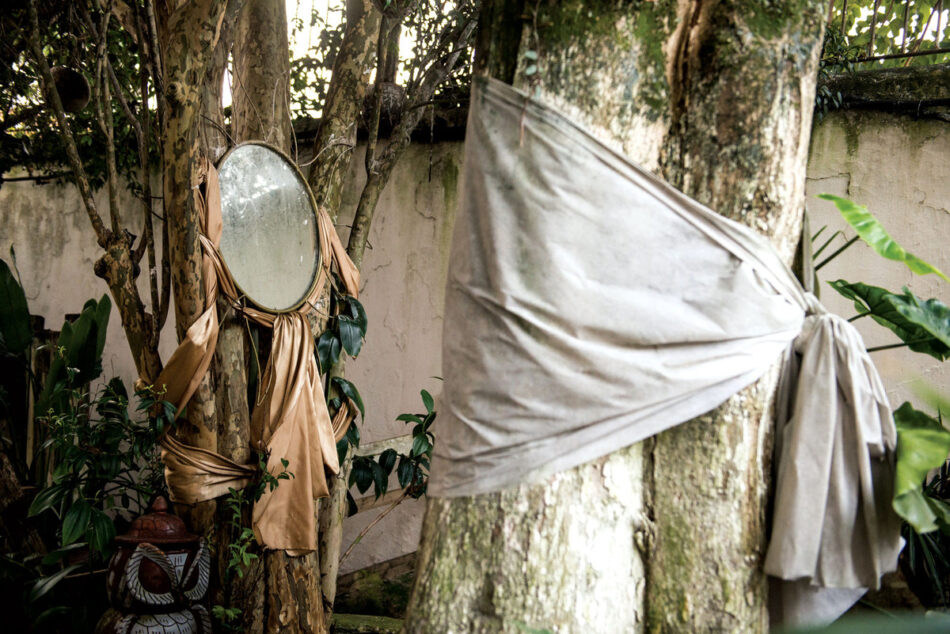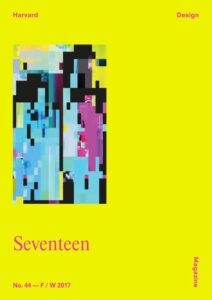Sixteen plus One
Brazil was the last nation to formally abolish slavery, in 1888. By then, almost five million slaves had been trafficked there from Africa—mostly from present-day Nigeria, Benin, and Angola. Once in Brazil, they maintained, often in secret, African religious practices, which continue to thrive more openly today. These practices hold great sway over urban ecological issues in Brazil; they offer an important repertoire for negotiations over ethnic relations and the preservation of nature and the environment.
In the Afro-Brazilian religion of Candomblé, the faithful recognize and worship at least sixteen “energies of nature,” often treated as deities, known as orishas. These include rivers, wind, iron, fire, and the very air we breathe. Sixteen is not a fixed number though. Some say that there are sixteen orishas plus one, whereby the one represents not a single unit, but the unlimited capacity for extension that is also part of nature. As Jacob Olupona points out, in current-day West Africa, one might encounter much larger pantheons of deities, some reaching two or four hundred entities, but always with the additional one.
These energies, which are also associated with particular colors, shapes, leaves, and animals, are cultivated on terreiros (temples of Afro-Brazilian religiosity) using various combinations of herbal baths, animal sacrifice, and other rituals. Some terreiros, especially older ones, can be understood as hybrids of urban farms and monasteries where the elements of nature are cultivated together with Afro-diasporic knowledge, kinship, and faith. These terreiros are important spaces of urban ecology in Brazilian cities, particularly in Salvador, and they need to be considered within the context of their urban landscape.

Afro-Brazilian religious concepts can be better understood from the perspective of their daily practice, which help decenter Euro-American understandings of the value and management of nature, greenery, and energies. To address the urban ecology of terreiros is also to reconsider what design can accomplish. Perhaps more than we like to recognize, the study of ecology already involves an appreciation of the exchange of energies between humans and nonhumans: that is, we already know that plants, air, and water are fundamental to human survival. Imagine we learn with Afro-Brazilians to better cultivate and expand the potential use of these nonhuman elements in urban spaces. What if we consider how to deal with the energy of time, or the energy of rainbows, as we design and care for urban landscapes?
When we talk of sixteen plus one orishas, the one may represent the openness that we must have toward possibilities that expand the horizons of our disciplines. If only we would learn more from the one that is not us, the so-called other. Sixteen plus one could equal seventeen, or much more.
Gareth Doherty is assistant professor of landscape architecture and senior research associate at the Harvard University Graduate School of Design, where he is also director of the Master in Landscape Architecture program. He is coeditor, with Mohsen Mostafavi, of Ecological Urbanism (2010, revised 2016); and, with Charles Waldheim, of Is Landscape…?: Essays on the Identity of Landscape (2015); and author of Paradoxes of Green: Landscapes of a City-State (2017). Doherty is a founding editor of New Geographies.
Moises Lino e Silva works within the field of political anthropology, specializing in the ethnographic study of freedom and authority in relation to pressing topics such as poverty, violence, sexuality, and religion. Recently, he has been focusing on the cultivation of Afro-Brazilian power and the place of freedom in the aftermath of formal slavery, using ethnographic research to understand contemporary power dynamics between Latin America and West Africa.
